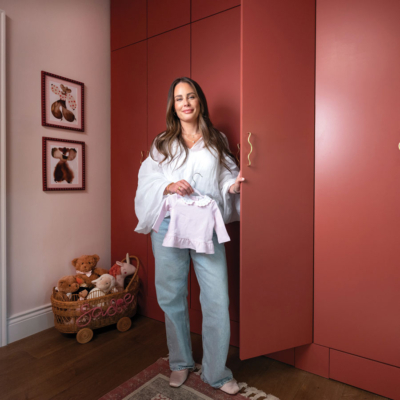We are thinking, but not necessarily doing … here’s how we can change our fashion shopping habits …
Living through a global pandemic this past year has made us focus on what really matters. Our collective pace slowed, our lives became more insular. With more time to think than ever before, our thoughts turned to sustainable choices; we embraced a slower way of living and reduced unnecessary consumption.
With Earth Day taking place today, there is no better time to reconsider our shopping habits. The effects of the fashion industry are well-known by now – from carbon emissions and excess waste to controversial supply chains – and the onus is often put on brands to take charge of making a change and putting a stop to negative impacts on our planet – but what about the responsibility of consumers?
According to a report by global e-tailer Zalando, during the pandemic, shopping sustainably became more important than ever before to customers. Incomes were slashed, industries were devastated overnight and job security went out the window for many. Our money, when we spent it, had to be spent on something valuable, tangible and worthy. Add to that the fact that it’s hard these days to open a newspaper, website or social media platform without being hit by news of global warming and climate change and it’s no wonder that pandemic life has forced us to face up to some hard truths – if we want things to change, we must make a difference.
Zalando’s report “It Takes Two: How the Industry and Consumers Can Close the Sustainability ‘Attitude-Behaviour Gap’ in Fashion” investigates the gap between attitudes and behaviours. It shows that while many consumers are inclined to agree with and support the idea of sustainable practices in fashion, they struggle to turn their sustainability priorities into fashion purchasing decisions.
Kate Heiny, Director of Sustainability at Zalando says: “Our customers tell us that they care deeply about sustainability, but they struggle to translate their values into actions when they go into stores or shop online. This report brought us to the conclusion that if we really want to close the long-existing attitude-behaviour gap in fashion, collaboration is the only way forward. We have to come together; the fashion industry and our consumers.”
Customers are now able to browse Zalando’s sustainable fashion assortment according to the values they care about, such as water conservation, worker wellbeing, reusing materials, animal welfare, reducing emissions, and extending the life of fashion. In a move that echoes other brands in the industry, Zalando is investing in its pre-owned offering which enables customers to trade in and buy pre-owned fashion. From today, customers in Ireland will be able to quickly and effortlessly trade in and buy pre-owned fashion directly on Zalando with the same convenience in free shipping, payment and returns known to Zalando’s customers.
While many consumers are inclined to agree with and support the idea of sustainable practices in fashion, they struggle to turn their sustainability priorities into fashion purchasing decisions.
Resale is a relatively new concept for many fashion retailers, though New York-based brand Eileen Fisher, an industry leader in sustainable fashion, has been accepting pre-loved clothes through their takeback programme since 2009, where items from previous collections are sold on its Renew site. Similarly, Swedish fashion label Filippa K has offered a resale programme and second-hand shop since 2008, where previous collections are given a second chance at life. Luxury consignment websites too have been around for some time, most notably The Real Real and Vestiaire Collective (in which French luxury conglomerate Kering took a five per cent stake earlier this year – an indication that resale is on the rise). And Selfridges have introduced a resell service online and in-store, where users get store credit in return for their pre-loved goods.
Playing catch-up are the larger fast fashion chains, whose very model of mass production and promotion of over-consumption and constant newness directly opposes the values of sustainability. In an attempt to make their business model more sustainable, H&M-owned Cos released their resale website last September, where customers can sell archive pieces from previous Cos collections with the brand taking ten per cent commission for facilitating the service. Similarly, Levis launched a secondhand resale site, which offers both unique and reworked vintage pieces as well as a buyback program for worn items.
It’s a move that makes sense for both brands and consumers. Less waste equals less damage on the environment. Easier access to high quality pre-loved goods makes shopping sustainably more achievable for consumers. But more importantly, reports show that customer interest in resale is growing. US-based intelligence service GlobalData have predicted the resale market will grow from $24 billion in 2018 to $51 billion by 2023. And 63 per cent of Zalando’s customers that were interviewed for the report believe it is important their clothes are given a second life rather than ending up in landfill.
It’s clear that making use of the billions of clothes already in existence has never been more important, to reduce landfill waste and maximise the lifespan of clothing. But resale is just one step in tackling the problems raised by the fashion industry. The report predicts that consumers will focus more on circularity in fashion over the next decade by engaging in recycling, reuse, resale, repair and rentals. According to Zalando, there are three key priorities that need to be accelerated now. First, the fashion industry must earn trust through simple and convincing communication, secondly, motivate changes in behaviour, and thirdly, it must scale circularity and offer solutions to close the loop.
Finally, the report finds that for the fashion industry there is a need to make sustainable choices more attractive, realistic and accessible. Consumers, meanwhile, need to prioritise sustainability in fashion as much as in other parts of their lives. A more sustainable way of shopping is already on the horizon.
LOVETHEGLOSS.IE?
Sign up to our MAILING LIST now for a roundup of the latest fashion, beauty, interiors and entertaining news from THE GLOSS MAGAZINE’s daily dispatches.











